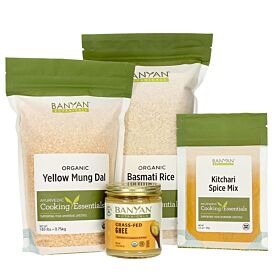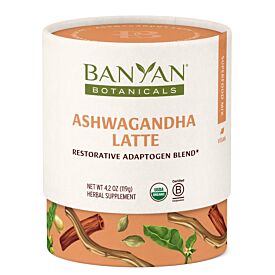3 Ayurvedic Ways to Heal Your Relationship with Food
I haven’t always felt well in my body. In fact, for much of my childhood and early adult years I wrestled with chronic pain and digestive challenges. I turned to food as my solution. I became passionate about cooking for health and the concept of food as a healing path.
I did elimination diets and extensive fasts. I brought in a slurry of superfood and protein powders to supplement what was missing. I even became a raw foodist at one point, because I had learned that cooking over 108 degrees fahrenheit was believed to destroy the essential nutrient and enzyme content of the food.
For a time, I felt better. It was a big change from all the fast food and microwave meals I grew up eating. But as soon as the seasons would change, I still found myself feeling uncomfortable and bloated, hungry and fatigued.
A Brief History of Diet Culture
The concept of restrictive dieting is a relatively recent novelty in the span of human history. While you can trace back through the centuries many different dietary observances for religious, spiritual, or medical reasons, wide-spread dietary fads weren’t popularized until the mid-19th century.
At this time, William Banting first published his pamphlet titled "Letter on Corpulence & Leanness, Addressed to the Public," in which he detailed his own experience with obesity and prescribed a low carb/high protein diet for weight loss to the masses. The Banting Diet is recognized as one of the precursors to the many modern low-carbohydrate diet trends that continue today.1
Since then, we’ve seen a series of exclusionary diets, from The Grapefruit Diet (1930s) and Cabbage Soup Diet (1950s), to the still popular Atkins Diet (1972) and its many low-carb spin offs—The South Beach Diet (1990s), The Paleo Diet (2002), and now the Keto Diet, which focuses on 90% of your caloric intake from fat sources (originally founded in the 1920s and popularized in the last decade).
From Oprah to Dr. Oz, and now social media influencers and algorithms promoting the newest Tea-Tox, smoothie cleanse, or supplement to optimize your energy and weight—it’s no wonder we feel overwhelmed and confused about food.
Never before in human history have we had so much access to food at our fingertips. Yet such overabundance has spurned more confusion than ever about what and how to eat.
An Ayurvedic View of Dieting
These types of exclusionary diets tend to diminish the body’s tissues over time. In Ayurveda, we call this principle langhana, or that which lightens and reduces. Langhana refers to the therapeutic approach employed through intentional fasting or cleansing methods to produce laghuta (lightness) in the body and to support pachana (conversion of undigested food material to digested).
Foods that are bitter, astringent, and pungent in taste can have this langhana effect. Think of the popular celery juice craze. Celery is astringent, light, dry, and rough. It has the wonderful ability to clear toxins from the body, but when consumed cold and in excess it can cause excess dryness, bloating, occasional constipation, feelings of anxiousness, and even disrupted sleep—all the signs and symptoms of imbalanced vata dosha.
If we eat when we are stressed, consume poor quality foods or the wrong food combinations, or perhaps take a nap if we’re feeling drowsy after eating, it’s very possible this food will not be properly digested.
The residual of this undigested food is called ama. Over time, it can leave us feeling heavy, bloated, stagnant, and fatigued. We can experience a host of digestive upsets and even weight gain, no matter what our Ayurvedic constitution.
Ama accumulation is often the reason we’re not digesting our food. And when we’re not digesting our food well, we often feel the need to make extreme changes in our diet. Yet with extreme changes in our diet and lifestyle, agni (the digestive fire) can also be disrupted. Ama accumulates as a result, the mind becomes clouded with confusion, and so the cycle persists.
However, if Ayurvedic cooking is approached as a set of rules of right and wrong, a list of food charts to rigidly live by, then we hop back on the hamster wheel of viewing Ayurveda as another exclusionary diet. Instead, we should allow it to be a learning journey—an opportunity to celebrate food as nourishment and to listen to our body’s unique and dynamic needs.

3 Ways to Build a Healthy Relationship with Food
Ayurveda offers a wealth of wisdom to guide us in the realm of food, digestion, and mindful eating. Here are a few insights that have helped me apply Ayurvedic diet and lifestyle practices to heal my relationship to food and to my body.
1. All Food Can Be Helpful or Harmful
“All matter has the potential to be medicinal or poisonous depending on how it is used.”
A healthy diet is not about restricting whole food groups from your diet forever. In fact, when we conduct elimination diets for cleansing purposes, the aim is to restore your digestion so you can bring the more building food groups back into your diet and effectively nourish all the tissues of the body.
Meat, wheat, dairy, and sugar can be supportive when prepared correctly and eaten according to the individual’s digestive capacity, environment, season, and time of life. There is a specific role and place for all six tastes and their actions. Food doesn’t have to be viewed through the binary lens of good versus bad.
2. Change Is the Only Constant
“Life is like riding a bicycle. To keep your balance you must keep moving.”
The word dosha is derived from the verb “dusa,” which means to vitiate or to change from the normal condition. The doshas are not static. In a state of good equilibrium and rhythmic functioning, the doshas support the body. But when affected by unstable change, imbalanced doshas can lead to disease.
There’s this notion that practicing Ayurveda means to always seek and maintain a perfect state of balance. Yet, it’s important to examine our view of what balance means. Balance is not static. It’s not a final state you arrive at by following a checklist of dietary guidelines.
If we view the body as a part of nature’s fluctuations, we can observe how our own body also responds to the weather and changing seasons. Balance is found by observing what’s present and bringing in the opposite qualities to reduce what is in excess.
This can’t be done by eating for your prakriti alone. You must also look at what is present in your current body/mind experience from day to day, also known as your vikriti. A healthy diet should reflect what is needed today to nurture good digestion and overall balance in the body.
3. When in Doubt, Keep It Simple
“Lose your mind and come to your senses.”
When in doubt, keep things simple and use your senses as a guide. Just as complex food combinations can clog your channels, complex theories can bog down the mind. Ayurvedic principles can sometimes feel very illusory at first. Even the doshas start to get complicated in the myriad ways they can affect the body.
When you’re standing in front of the fridge choosing what to make for dinner, you might feel the overwhelm start to set in. And when we begin to overanalyze, eating no longer feels intuitive.
The solution? Keep it simple.
Ayurveda’s building blocks for all things tangible begin with the concept of the gunas. The gunas refer to qualities or attributes that are used to describe the characteristics of substances, foods, and even the doshas.
There are ten pairs of opposites you’ll want to know:
| Heavy | Light |
| Slow/Dull | Sharp |
| Cold | Hot |
| Oily/Wet | Dry |
| Smooth | Rough |
| Dense/Solid | Liquid |
| Soft | Hard |
| Stable | Mobile |
| Gross | Subtle |
| Sticky/Cloudy | Clear |
When we remember the fundamental concept that like increases like and opposites balance, then we can begin to observe our bodies through the lens of these qualities and take aligned action without so much confusion.
If we are hot in the summertime, we should choose foods that are cooling in taste and liquid in quality. If we are dry, we should prepare foods with ghee or other oils that provide a smooth, moist quality. If we feel a heaviness in the stomach, we should choose foods that are light and easy to digest.
Through our senses, we can understand these qualities on a very felt and tangible level.
Nourishing Our Inherent Wholeness
Establishing a healing relationship with food starts by learning the cues of your body and becoming attuned to your environment. Ayurveda empowers us with a time-tested language to know ourselves through the many seasons and cycles of life. Its guiding principles help us to live dynamically in the world around us.
We may have a different set of constraints to navigate in our modern food landscape today, but the wisdom of Ayurveda remains reliable. With practice, we can build trust in the process and gain confidence in our ability to nourish ourselves—moving beyond the need for short-lived trends and digging a deep well to our inner wisdom.













